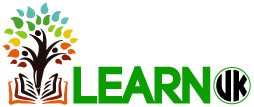Secure In Your Education: Safety Features for Finance and Record-Keeping
During a majority of your life, you’ll have some financial association with education. From pre-school to high school, you’ll most likely be on your parent’s ticket. After that, in college or through higher education, you’ll have to find out about loans, scholarships, grants, and interest rates. Past that, you’ll either be paying back loans, or once you have kids, you’ll be starting the whole cycle over again. The point is, because it’s such an ever-present feature, you should make sure that all of your educational financial transactions are as secure as possible, which means secure checks, safety features from banks, and regular financial checklists and checkups.
Secure Checks
Even though a lot of educational financial transactions are going to be digital or through credit and data transfers, there are still going to be cases where you have to pay with physical checks. Because of this, you should always keep secure checks printed somewhere, and make sure they are up to date and have all of the latest security features available. There are lots of options online as to which features, colors, and amounts you want, but always be sure to work with reputable companies, or with your bank directly if it makes more sense to buy in bulk that way.
Safety Features from Banks
You’re sitting, eating lunch, and you get a phone call. You pick up, and it’s an automated message from your bank saying that there was a particularly unusual charge made on your card. Someone is trying to spend $1,000 on tuition for on online class based in Europe. Bang! Denied. And your money is saved. When you set up safety features connected to your bank account, you can almost guarantee that any kind of potential fraud is going to be almost immediately detected. That kind of peace of mind is priceless, so it is well worth finding out how to have your bank call or text you whenever they spot anything that seems particularly out of the ordinary.
Regular Financial Checklists
Regularly checking your own finances is another good way to make sure your educational money is going where it should. Especially if you’re paying back large loans, you want to keep an eye to where your interest rates are. By checking every week how much you owe, how much of your primary you’ve paid, how much you’ve paid to interest, and how long you have left, you’ll be able to keep a good idea of where your basic budget needs to be in order to your to keep a secure connection to your particular lifestyle. Talking to education financial advisers along the way will also help you keep the numbers straight.

